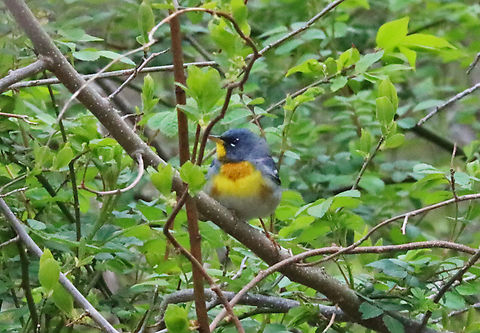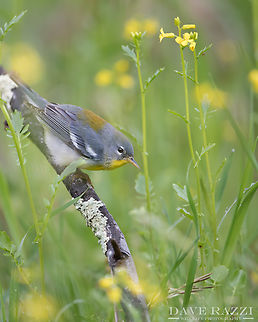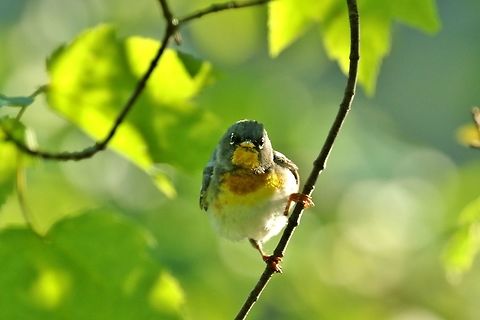
Appearance
The northern parula is one of the smaller North American migratory warblers, often being one of the smallest birds in a mixed feeding flock besides kinglets or gnatcatchers. Length is 10.8 to 12.4 cm (4.3 to 4.9 in), wingspan is 16 to 18 cm (6.3 to 7.1 in) and body mass is 5 to 11 g (0.18 to 0.39 oz). Among standard measurements, the wing chord is 5.1 to 6.5 cm (2.0 to 2.6 in), the tail is 3.7 to 4.5 cm (1.5 to 1.8 in), the bill is 0.8 to 1.1 cm (0.31 to 0.43 in) and the tarsus is 1.5 to 1.8 cm (0.59 to 0.71 in). This species has mainly blue-gray upper parts, with a greenish back patch and two white wing bars. The breast is yellowish shading into the white belly. The summer male has bluish and rufous breast bands and prominent white eye crescents. At the end of the breeding season, individuals molt into a duller version of the breeding plumage. Females are similar-looking but tend to be duller and lack the breast bands. The unique breastband fades in males and may disappear altogether in females.Its song is a click-like trill or buzz, zeeeeee-yip and the call is a soft chip.

Distribution
This species is migratory, wintering in southern Florida, northern Central America, the West Indies and most of the Lesser Antilles. This species is a very rare vagrant to western Europe.
Habitat
The northern parula inhabits various habitats depending on season and location. This is primarily a forest-dwelling species, but the northern and southern breeding populations select different habitats. In general, abundance of this species has been found to be positively correlated with increased tree species diversity, canopy height, and percent canopy cover. Northern populations breed in mature, moist coniferous forests. This species constructs its pendulum nests in hanging vegetation and so it is often attracted to suspended clumps of moss or coniferous twigs that are more abundant in moist spruce bogs or hemlock swamps. Southern populations breed in mature, moist, bottomland forest where Spanish moss is prevalent. Outside of the breeding season, the northern parula becomes more of a habitat generalist and may be found in a wide variety of habitats during migration and winter. These habitats may include: pastures; moist, dry or wet forests; and agricultural fields or plantations.References:
Some text fragments are auto parsed from Wikipedia.